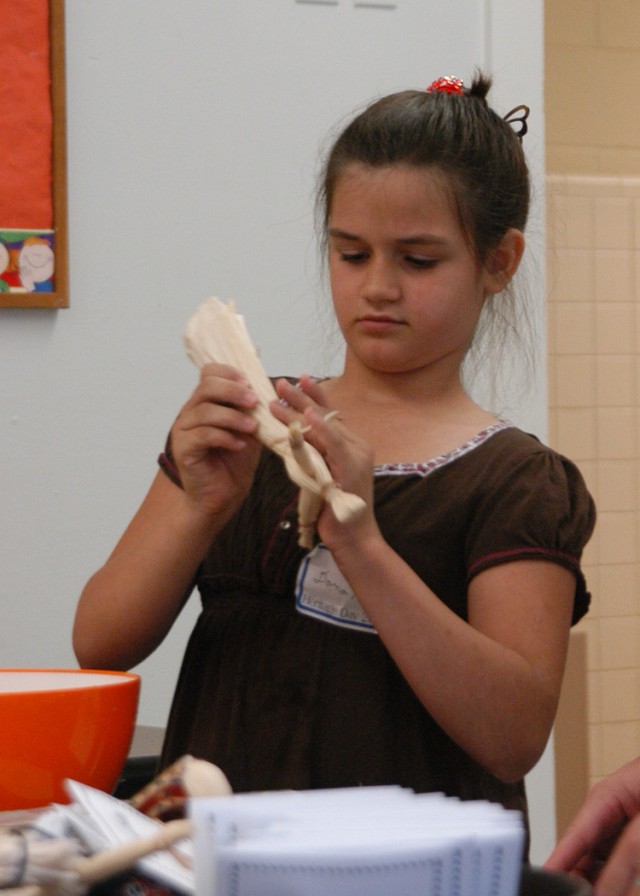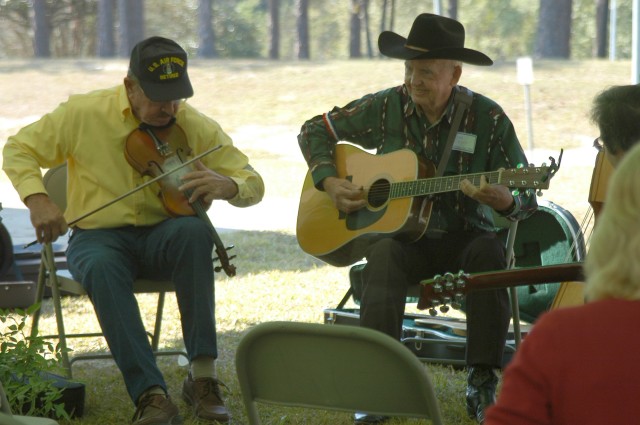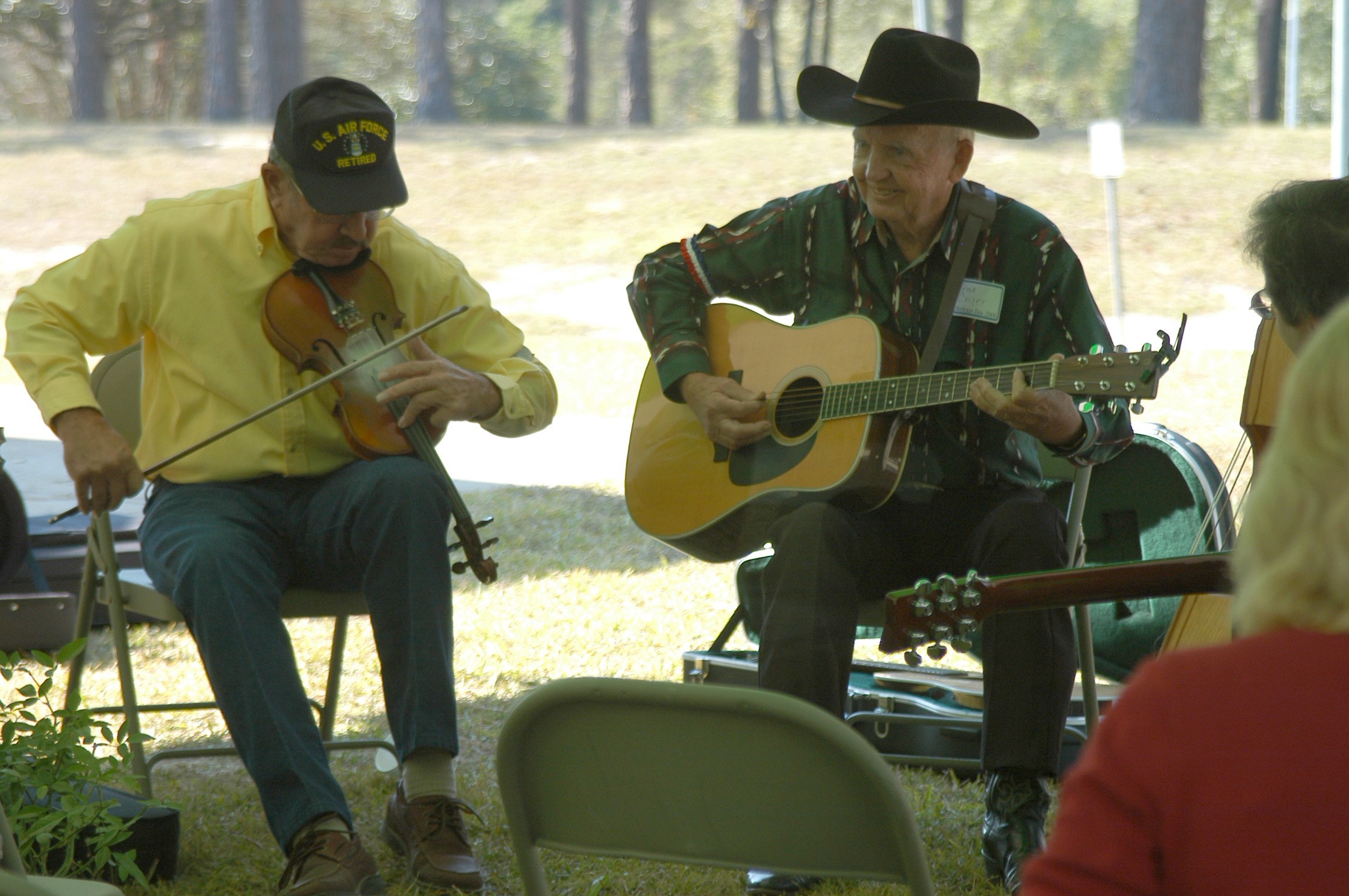FORT POLK, La. - Before Fort Polk existed, the land it now occupies was home to a thriving community. In 1941, the U.S. government purchased the land that became Camp Polk (later Fort Polk), in preparation for World War II.
The families who had to leave were often evicted forcibly, and access to their old cemeteries and homesteads was limited for decades. During that turbulent time, 254 families were relocated, and the Army has taken steps to heal wounds with those families and their descendants.
More than 200 descendants of displaced families gathered at the Main Post Chapel Nov. 1. At least 43 of them were alive at the time of the relocation. The Fort Polk Environmental/Natural Resources Management Division, in coordination with The Vernon Parish Historical and Genealogical Society and U.S. Forest Service, organized the Heritage Day event.
This was the second annual event, and was met with great appreciation by the families. Skip Cryer spoke as a representative of the heritage families. "This is very important to the families," he said. "This morning we have a dramatic reversal (in the relationship between the Army and the heritage families). Even people in authority, who have rules and regulations to follow, have hearts. I cannot stress enough how the coordinators of this event have taken the time to assist us. It's very moving to me. You don't run across people like this everywhere. They understand our need to connect with our heritage."
Brig. Gen. James Yarbrough, commander, Joint Readiness Training Center and Fort Polk, offered words of condolence, saying "Why'd we wait so long to do this' Why was last year the first year' The (relocation) was really rough on you families. Sixty-seven years later, it helps for someone in the government to say: that was a regrettable way to handle the situation, and we're sorry.
"Fort Polk has meant a lot to the Army ever since," Yarbrough continued. "It is the silver lining in a bad story. Most of the divisions that deployed during WWII came to Camp Polk to train. This is a premier plot of training land, and the Louisiana Maneuvers of 1941-1943 were created to test the tank. It was a crucial capability in WWII, and in 2008, the exact same thing is happening. Ten brigades a year come through Fort Polk. Then, and now, the relevance of Fort Polk is exactly the same."
The day was filled with activities and information sharing to celebrate and preserve the heritage of displaced families. Attendees took tours of family cemeteries still extant on Fort Polk, shared genealogical information and photos, learned about historical children's games and listened to oral histories and a live performance of traditional music.
The response to the event was overwhelmingly positive, said Cryer, who exhorted his fellow attendees to assist in the effort to preserve their history.
"We need to help this program grow," he said. "We are trying to re-establish the history of the families in this part of Vernon Parish. Only the families can make this thing work. The children here need to know about their heritage. The only way they're going to know it is if you tell them."
Yarbrough underlined Cryer's words. "We are stewards of this history. If we don't steward it, it can escape us," he said.
Danny Hudson, chairman of the heritage planning committee, said the continuous endeavor to gather family histories has received a boost from Heritage Day.
"Because of the scope of what we're doing, we can't focus on gathering historical information only on Heritage Day," he said. "But when you compare this to last year, we've received volumes of information and have made a lot of new contacts in the process. The heritage collection itself has grown leaps and bounds."
Although a few families are still missing, "we can now almost see the complete picture," he said. Hudson also outlined the objective of the preservation efforts.
"The ultimate goal for this, and the promise we made to the community," he said, "is that we will capture, archive and share that information. A lot of family information gets watered down as artifacts and photos get passed to each generation, and we're able to collect it and make it available and make sure that the story remains in the public lexicon forever."
The Vernon Parish Historical and Genealogical Society has been instrumental in the process, Hudson said. "They have the professional expertise for genealogy, and we're relying on them to assist us in putting together the family histories and genealogies," he said.
Though Heritage Day was spearheaded by the ENRMD, a host of other Fort Polk offices also took part in facilitating the event.
"The whole installation came together to make this happen," Hudson said.
ENRMD has also been working on a project to restore and maintain the family cemeteries located on Fort Polk.
"Last year, we signed a tripartite agreement with Northwestern State University and the U.S. Forest Service," said Hudson. He explained that graduate students from the university surveyed the cemeteries, and the Forest Service has been invaluable in archaeological efforts, which involved the use of ground-penetrating radar to identify the location of unmarked graves in the cemeteries.
More than 100 graves have been found.
"Our best accomplishment to date has been our cemetery project," said Hudson. Besides identifying graves, there are plans to construct fences, brick archways and iron gates at each cemetery. The discovery and preservation of homestead artifacts is another facet of the project.
"Vestiges of old homeplaces, wells and picket fences are still out there on the landscape," said Hudson. "That stuff is still visible, because of what we do as an installation. If we were a large retail company, (the artifacts) wouldn't be there. We protect the landscape because of the benefit to the Soldier, and in doing so, the historical artifacts can still be found out there.
"The history of the families displaced by Fort Polk is relevant to the Soldier who trains here, too, said Hudson. "It gives you a sense of what you're fighting for. If you're camping out in a mosquito-infested swamp and see a well sitting out there, that's a reminder of the sacrifice those families made to provide the Soldier with a place to train. It's also a reminder that we're protecting our own homes."
The reconciliation between the heritage families and the Army was a poignant effect of Heritage Day.
"I think (Heritage Day) is just outstanding," said Thomas Hughes, a heritage family member. "What got me was the healing of the wounds that happened through Brig. Gen. Yarbrough's speech. We've been kicked out, but this is the only country in the world that builds on that. Even though our families got kicked out, many lives were saved by the training that happened here in WWII alone, and many lives are being saved in Iraq right now. It's not all negative."
"We're dredging up some hard memories," said Hudson. "This has been a healing event, even for the families who were most affected." Hughes' mother, Joyce Haymon, was thrilled by the experience when she took a tour of the cemeteries and homestead sites. "It's wonderful," she said. "We don't see much out here but trees, but it's home. I look forward to the days we can come back."




Social Sharing